-
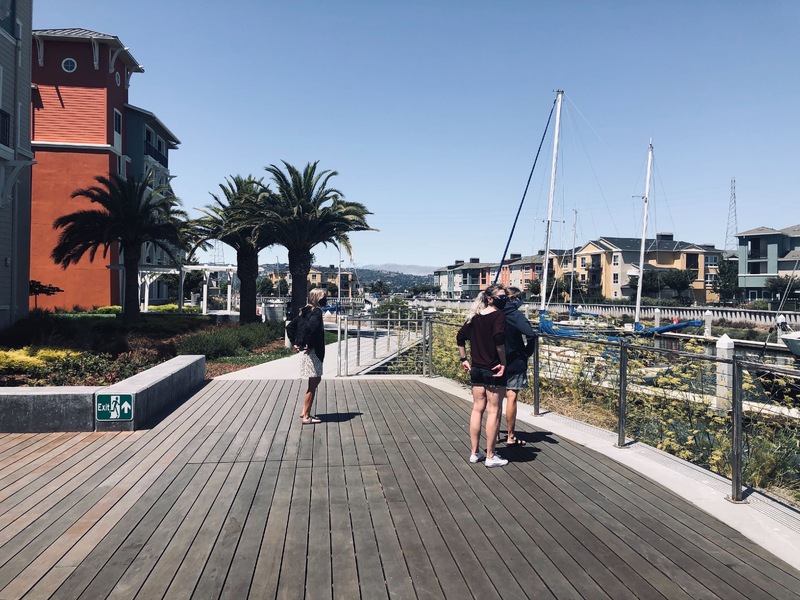
2020-07-14
In the spring of 2020, my sister finished up her post-doctoral program and needed to find a job. Unfortunately, if job hunting wasn't hard enough, the Covid-19 pandemic hit in March 2020, and in-person interviews were canceled as companies went remote. After a number of Zoom interviews later, she landed a job. The only issue - that job was in California, a state that had responded to the pandemic with some of the strictest restrictions.
In July, the moving truck was loaded, we hopped into our cars and began the two-day drive from Texas to California. We had originally planned to take the southern I-10 route through New Mexico, but before we left, we learned New Mexico had implemented a 14-day quarantine for anyone entering the state. Since we weren't 100% sure if that applied to people just passing through, we decided to go the more northern route staying the night in Colorado and Nevada. While both hotels we stayed at assured us they'd taken extra precautions cleaning the rooms, we followed the CDC-suggested guideline of bringing cleaning supplies and wiping down hard surfaces when we got our rooms. I'm a bit of a germaphobe, and this was the first time no one gave me funny looks when I entered a hotel with a can of Lysol wipes.
Overall, besides wearing a mask in public, the road trip to California was similar to road trips pre-pandemic. Things got a little bit more restrictive as we got into Redwood City. Unlike in Texas, masks were required indoors and outdoors if other people were nearby. Since it was a lot cooler in California, I was mostly fine with that requirement. With most indoor attractions either closed or open only to a reservation, we decided we'd go to the beach while we waited for the moving truck to arrive. Apparently that was a popular idea, so it was hard to find a part of the beach without people around so we could take our masks off.
Besides the mask mandate, the only other restriction that impacted our trip to California was that California had closed indoor dining, so all our meals had to be eaten curbside or to-go. We found a few restaurants with outdoor seating, but mostly it was easier just to get take-away and eat it on the floor of my sister's new apartment.
Since we weren't flying and we really weren't in California to do tourist activities, traveling wasn't that difficult. However, while it wasn't difficult, it was terrifying. Our trip to California was pretty early in the pandemic, and there wasn't a lot known about Covid-19 yet. Additionally, there were countless stories on the news about people ending up in the hospital and dying from the virus. If we hadn't needed to move my sister in 2020, I don't think I would have traveled at that time. In fact, even as information came out about Covid-19 over the following months and years, I still wasn't comfortable traveling. My first trip since moving my sister was actually just this past June.
-
2021-06-03
My wife and I decided to travel to Greece immediately after the initial lockdown and when the travel restrictions were lifted. It was a difficult decision to take such a long trip during the pandemic, and especially since we had to travel through Germany in order to get to our final destination. Restrictions varied among countries, and the fear of another lockdown before returning to the United States made our trip quite stressful. Despite the circumstances, we decided to follow through with our plans because my wife needed to get a medical procedure done, and the doctor of her choice operates in Greece. After checking and double-checking all the required travel documents, we found out that we needed to provide negative Covid tests at the airport in Chicago in order to board the plane. It was unclear whether we would need to take another Covid test in Germany and upon arriving to Greece, but we both got our tests and headed to O’Hare international airport.
When we entered the airport, we couldn’t believe the long lines ahead of us. We made sure to get there 3 hours before our scheduled flight, and we waited in line so we could show proof of our test results. After a 40-minute wait, it was finally our turn. We handed in our tests and waited patiently while the lady at the desk was looking at them with a perplexed look on her face. “You can’t get on this flight”, she said. “Your tests expired 30 minutes ago. You need to get new tests”, she added. We were stunned since we had both gotten out tests the day before, and the rules stated that the tests would be valid for 24 hours. The airline employee was telling us that we had missed the 24-hour deadline by half an hour.
When we realized that the rule was very strict and there was no way we could get on the plane without taking new tests, we found out that we could get tested at the airport and get the results within 20-30 minutes. We both rushed to get new tests, but we were surprised to find out that the cost was $200 for each test. That was an added expense of $400 that we hadn’t planned for, the trip was very expensive, and we also had to pay for my wife’s medical bills in Greece. It was Wednesday evening, we would arrive in Greece on Thursday evening, and my wife’s appointment at the hospital was Friday morning. If we didn’t make that flight, we wouldn’t arrive in Greece on time for my wife’s scheduled operation. We had no choice but to get tested.
While all of that was happening, time was going by and there was a risk we wouldn’t make it to our flight on time. My wife got so overwhelmed and stressed out that at some point she sat on her suitcase and started crying in the middle of the airport. I gathered all my strength and patience and helped her get up and pull it together so we could run for the tests, get the results, and run back to check in. At that point I realized that we weren’t the only ones going through that situation. There was chaos around us, people arguing with employees, getting upset and shouting, other people crying, people who didn’t speak English and were trying to figure out what to do, families with kids running around frantically, and everyone was complaining that the rules hadn’t been clear. It was a huge mess, and we were in the midst of all that trying to get everything done.
We were able to get on a different flight that night, and we made it to Greece safely and on time for my wife’s hospital appointment. When I reflect back, I realize that there was indeed a lack of clear rules, and the whole situation could have been avoided if the airlines had provided more accurate guidelines. I have traveled internationally hundreds of times in my life, but I had never experienced anything like that before. I understand that the situation was new for everyone involved, and when I think back, I don’t get upset about it anymore, but that was definitely one of the most stressful travels I have ever had.
-
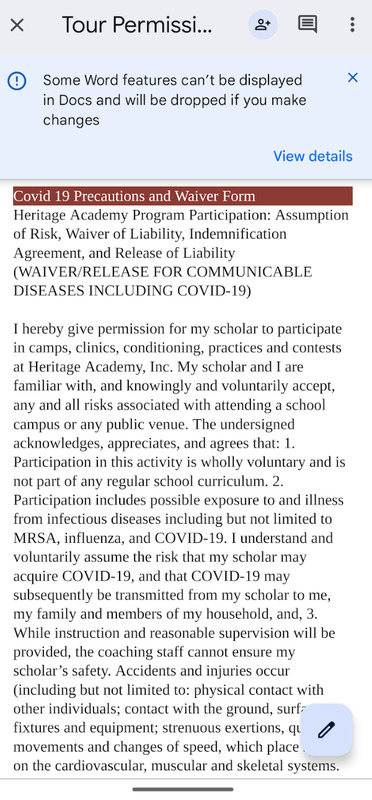
2022-03
As a school, we take a trip to New York and Boston every other year. We had planned to take a trip in October 2021 but many of the venues in New York were still closed so we had to postpone until spring 2022. Even then, there were still a lot of students who did not want to get the vaccine that was required to enter all indoor venues at the time. We had to split the trip so those without vaccinations could go later when the mandate was lifted. There were still mask mandates and we had to present our vaccination cards at every venue. Despite the restrictions though, we had a great time in New York.
-
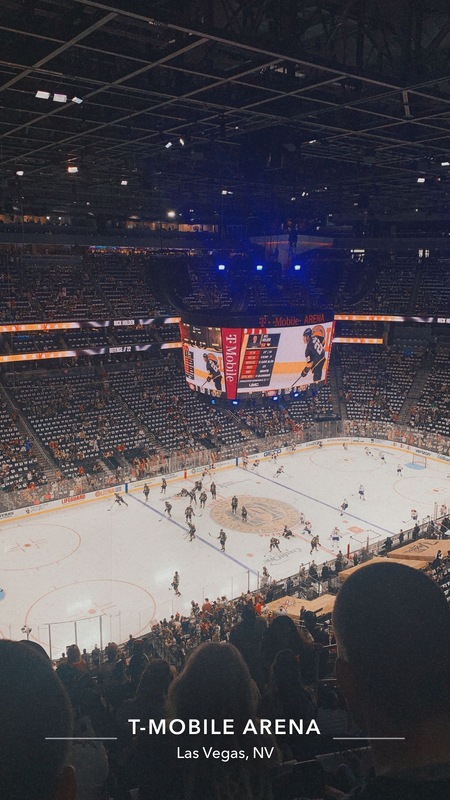
2021-06-16
I am a huge hockey fan and going to games was definitely something that I really missed during the pandemic. Once my family and I were fully vaccinated we were able to travel to Las Vegas and see playoff game. As a result of Covid-19, the NHL only had a 56 game season in 2021 and teams were placed in new divisions and the playoffs had some changes to its formatting, hence the weird matchup of Golden Knights/Canadiens in the Stanley Cup "Semifinals." The Golden Knights lost 3-0 but overall, it was still a really fun experience because I had never been to a Stanley Cup Playoff game before. There was still many Covid-19 restrictions in place during this time, but if I'm remembering correctly these restrictions were more prominent when I returned in December, especially at the arena.
-
2019-12
Following the lift of COVID-19 restrictions, many people traveled for fun, adventure, or as a celebration of renewed freedom. However, I did not travel following the coronavirus and have never traveled outside the surrounding states. There are many reasons for this, but some of the primary reasons are that I am young, my parents never traveled, I have not had the money to travel, and the idea of traveling is scary. However, the older I get, the more I want to travel and not stay in the same space. There are so many places I want to travel when I can, that it is almost overwhelming. I want to travel to Italy, Greece, Sicily, France, Germany, Denmark, etc. I want to see David by Michelangelo, the Louvre, Santorini, Neuschwanstein Castle, Tivoli Gardens, etc. The sites I would want to visit are based on important historical and cultural sites. I would want to make the most of any place I visit, and I would spend every waking moment doing something. I would document my trip primarily through photos, videos, and physical evidence of my visits. I really enjoy collecting brochures, maps, stickers, post cards, etc., from places as a physical record of my trip. I hope to one day travel.
-

2022-06-12
This was the first travel for me and my family when COVID-19 restrictions relaxed to a thoughtful degree. This is important to me because it was a time that my extended family came together and the appreciation of that was heightened by the absence of togetherness through out the more critical time of the pandemic.
-
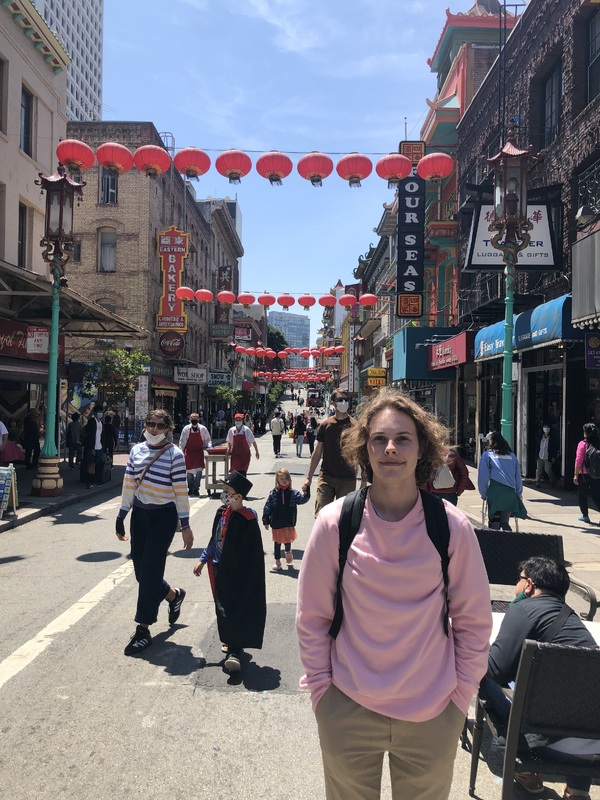
2021-07
During the summer of 2021, my girlfriend and I traveled to San Francisco for a week-long vacation. Travel and business restrictions were greatly lessened but still in place. As seen in the photo masks were still very common, especially in a big city like San Francisco where there was less anti-mask sentiment (my mask was off just for the photo). We wore masks for the majority of the trip, including while on planes and trains or in any public space. One of the bigger impacts of the pandemic that we experienced during our trip was how many restaurants and other businesses closed at earlier times than before. Additionally, while our trip was happening the 2020 Tokyo Olympics were finally occurring after all of the delays to its start. We were able to watch many events from our hotel room that would have otherwise occurred a year prior.
-
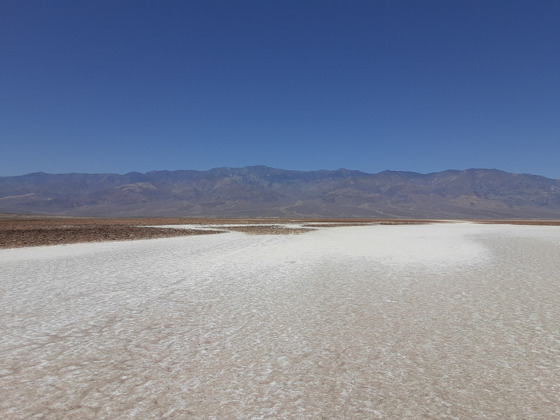
2021-05-05
In May 2021, my friends and I took a 17 day road trip out west visiting 7 national parks, and several national forests and state parks. It truly was the trip of a lifetime. We had been planning the trip in February of 2020 but then COVID happened and we delayed it to the next year. To document our trip, I submitted pictures from the trip that I made in 2021. Some of the highlights are Death Valley National Park, Yosemite, and Zion. This was my first time traveling west of the Mississippi so I loved experiencing the culture, food, and meeting the people who lived in many different regions of the US. When I went, there were surprisingly very few restrictions other than having to wear masks at the occasional business. I do remember in Zion the staff told us to stand "1 condors wingspan apart" even though its wingspan was about 10 feet. I took hundreds of photos and I unfortunately could not upload all of them so I picked these ones. This trip was very important to me because it represents the places I've been, and the memories I have made with my best friends as we experienced this amazing trip together. Finally, I should mention that I went on this trip and missed my in person college graduation ceremony, and I don't regret it for a moment.
-
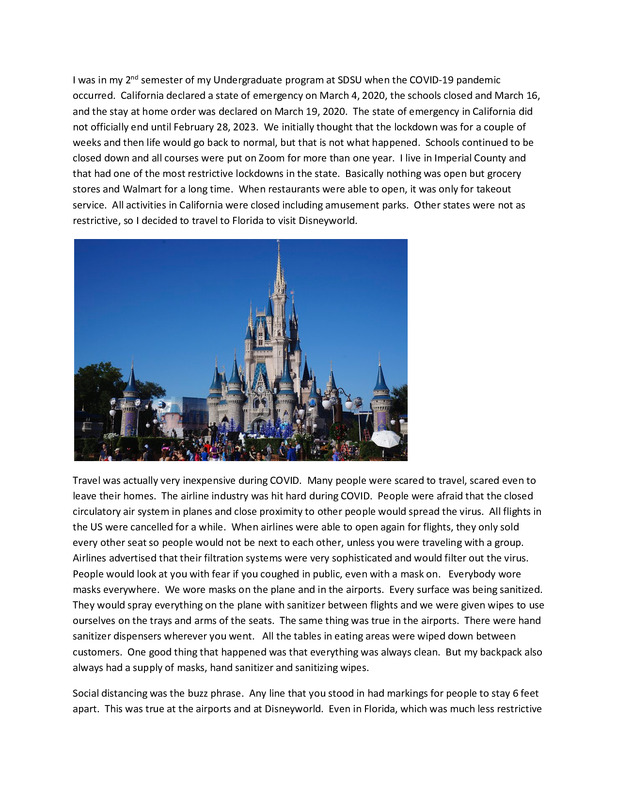
2020-10-10
Half full fights, social distancing and Disneyworld
-
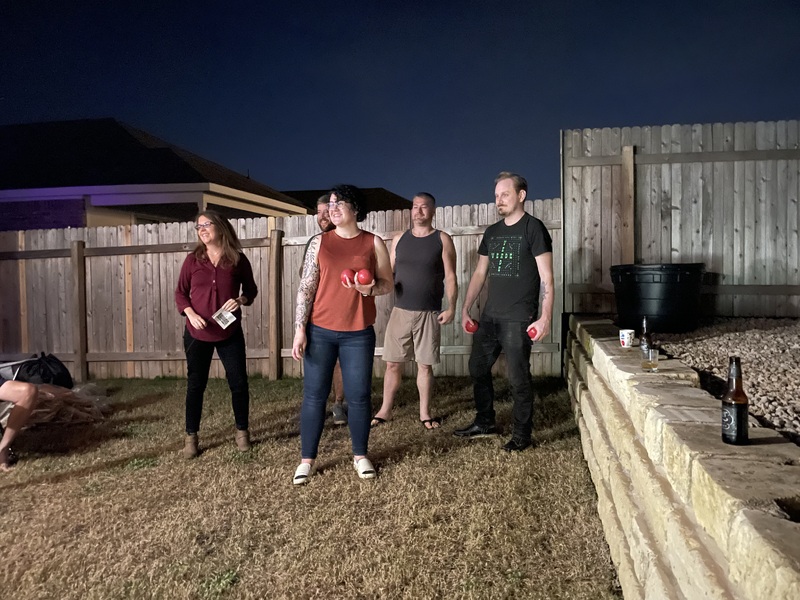
2021-12-25
The impact of COVID-19 on travel and tourism over the past three years has been significant, and in my experiences, travel for me in post-COVID era has been wildly different - as my mind swirls around a large concern that I could possibly do harm to my immunocompromised husband. He’d experienced major spinal and heart surgeries in the summer of 2020, and the following year a round of COVID left his nervous and immune systems permanently weakened.
My parents had planned a large family trip in May 2021, and my thoughts continued to swirl around the potential for another round of COVID afflicting my husband. I had us cancel. Months later, my family finally convinced us to get on a plane for Christmas to Austin, Texas to see my sister’s new home. It would be our son’s first flight, too, which only added to my anxiety.
It was December 2021, and most restrictions were still in place at airports at this time. I was grateful for the number of passengers on the flights, in the airports, and in public transportation hubs utilizing masks and maintaining distance from one another. I recalled seeing one family, completely maskless, at the airport. They seemed so out of place - and to be honest they looked very uncomfortable - too.
Luckily, like us, my extended family was hesitant to explore the hustle of downtown Austin, so much of the trip was spent with everyone at my sister’s new home, cooking, reading, completing puzzles, and most importantly: getting her lawn familiarized with several dozen rounds of Bocce ball. It was the first time we were all able to come together after the start of the pandemic, and I felt grateful for the opportunity to be with my family in the same safe space. We got way too competitive, but the laughter during Bocce proved the most memorable part of the trip. I loved how happy my family looked in this moment, especially my sister (front in orange) and my husband (over her right shoulder).
I am not sure what the future looks like for COVID and travel, but for me, I know that it already looks different - I will continue to mask, I will distance, and I will choose options that will do the least amount of harm to those I love and the people I may meet along the way.
-

2021-08-15
The Covid 19 Pandemic is and was a transformative event representing history in the making. The state of Oregon and particularly Portland witnessed a trifecta of converging crises beginning with the lockdown on St. Patrick’s Day in 2020. That summer was one of the hottest in recorded history and saw the city and state divided in smoke-filled chaos. The literal last words of “I can’t breathe” uttered by George Floyd were being chanted in the streets downtown as wildfires raged in all corners of the state, set against the backdrop of a global pandemic. Everything felt surreal and the tension in the city was like a powder keg. By the following summer some advancements had been made, the first round of vaccinations administered, but the same underlying issues were present in Portland. Houselessness, fractured political ideologies, and Far-Right and Far-Left members clashing in an invisible maelstrom on the Willamette River.
My husband and I had adhered to the very stringent guidelines and protocol set by both the city and state to the letter. For a bit of context, my husband worked on the front line as a department manager at a grocery store and wore a mask for eleven hours at a time often six days a week for a year and a half, while I volunteered at the Red Cross and held down the home front. In August of 2021, we finally decided that we needed to get out of town, so we grabbed the dog and set a course for the Crooked River in Central Oregon. It was a two-week period of sheer peace and glory bookended by fear and anger at the negligence of fellow humans. We camped on the river and practiced mindfulness and being present every day, breathing deeply the fresh air ushered in by a strong breeze from the East. The “going there” and “going home” portions were marred by anti-mask protestors with weapons arguing about state’s rights, as death toll numbers were rising. The fires had already burned over a million acres with no signs of slowing down, and the reality of Portland’s social justice issues did not disappear just because we did. The experience left us feeling gratitude for the opportunity to explore, our good health, and open minds, it was our 18th wedding anniversary, in which porcelain is traditionally given as a gift. Ironic, given the fact that not only is porcelain extraordinarily beautiful but also incredibly delicate, a perfect representation of the state of things during the summer of 2021.
-
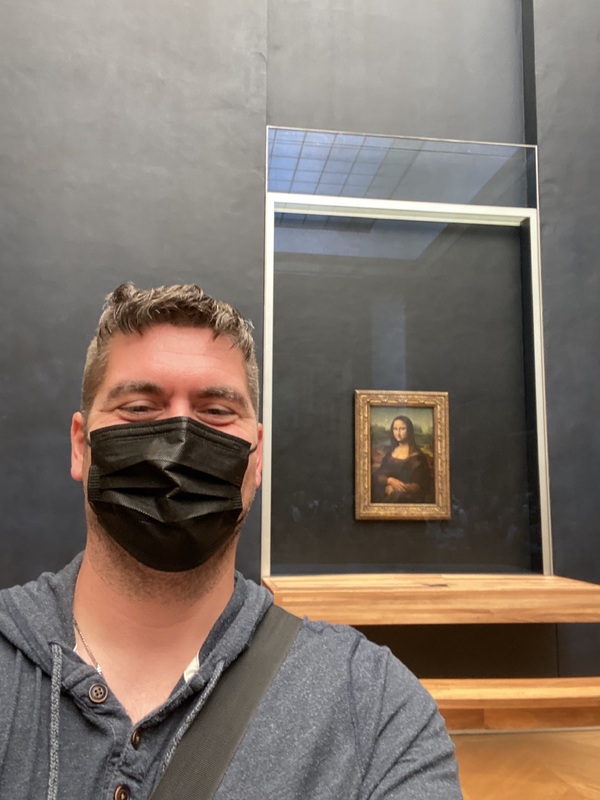
2022-06-03
I have led a student global travel trip for the last 10 years at my school. Because of the COVID-19 outbreak in 2020, our trip to Australia and New Zealand was delayed/cancelled until 2021 in hopes of COVID being over by then. I had 27 students have to postpone traveling on this trip. In 2021, we came across the same restrictions, and our trip was cancelled again. As we we were planning our 2022 trip, New Zealand still had quarantine rules that would have kept us in the hotel for a week before we would get to go anywhere or do anything. Due to this, we changed our trip to one to France, Switzerland, Germany, and Austria. My students wanted to travel again, but did not know what to expect. There were still masking rules in place in a lot of the places we visited, and everyone had to take a mandatory COVID-19 test to be able to leave Europe at the end of the trip and get back into the United States. This was the scariest part because if your test revealed you were positive for COVID, you were required to stay in the country until you were negative. Everyone on the trip dreaded the day of the test because we had heard so many stories about other schools on different trips that had students who had failed the test. The trip was extremely important to me because it represented these students being able to fully restart their lives and finally be able to be kids again. This is a picture of me from the Louvre waiting my turn to see the Mona Lisa. It was taken immediately after I took a picture of all my students in front of the painting. I can see the happiness in my eyes again, getting to see students do something they love to do.
-
2021-06-01
Unlike most people that we knew, we did not travel anywhere during the pandemic. We did not have any visitors outside of our family and continued to use social distancing until the restrictions were lifted. When the world opened up again, we still chose to stay fairly close to home. At the time, we were living in Harrisburg, PA and decided to visit Virginia Beach. We stayed at the Hilton and were shocked to see how to the pandemic had effected the tourism industry. The hotel was wildly understaffed as they had let many employees go over the past year and it was chaotic. The rooms were not cleaned on time for check-in so there were people packed into the lobby, bags everywhere, just waiting to get to their rooms. The employees were overworked and mostly rude; wholly unlike how it had been pre-pandemic. When we were finally able to check into our room, we got onto the elevator and found that there was some kind of liquid all over the floor. We tried to show an employee but there were none around to help. After getting into our room, we pulled out the sofa bed to find that it was full of sand and that the room had not been properly cleaned. Eventually, someone did come up to clean it but it took hours.
Our trip could be summed up as unrelaxing; nearly every employee seemed as though they were at their limits. There were still mask guidelines in place and all of the people there seemed angry about it, whether it was because they were wearing one and others weren’t or because they did not want to wear one and were angry that the guidelines told them to. It seems as though no one could be satisfied and everyone was inconvenienced no matter which side they were on.
-
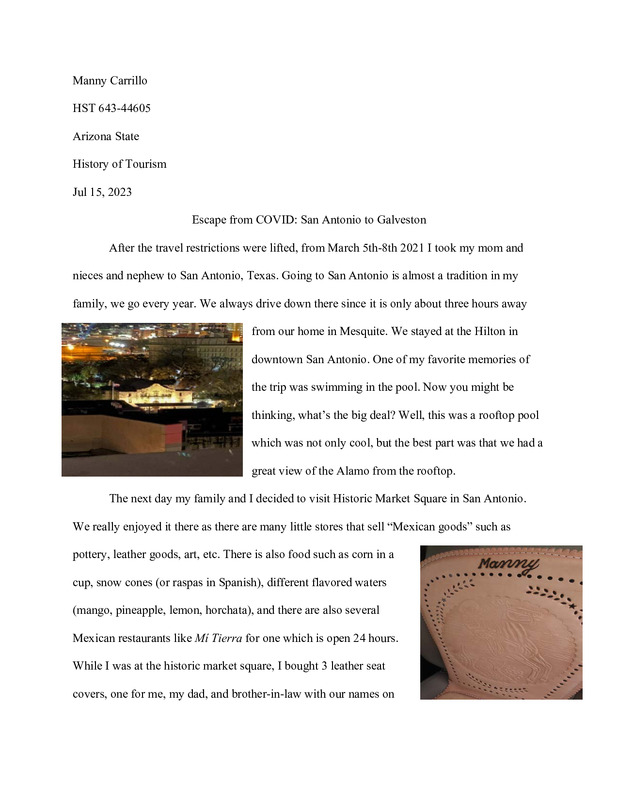
2021-03-06
I submitted this story because I wanted to explain what my first trip after COVID was like.
-
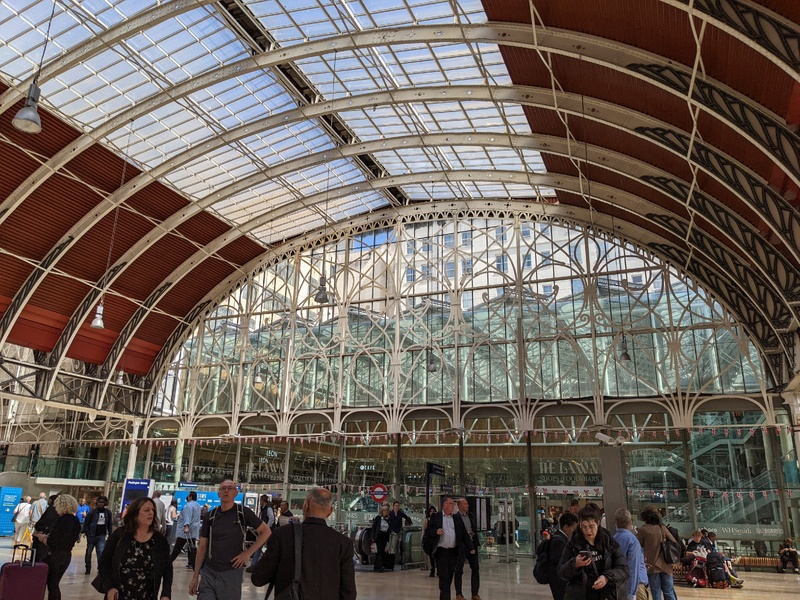
2022-06-12
During my honeymoon, my husband and I were in London, Summer of 2022. We had spent two weeks there and it was time to take the Eurostar train through the Channel Tunnel to Amsterdam. What particularly struck me was how serious the ticket agents and French government officials (the train must enter through France) were about Covid-19 Vaccine Record Cards. If someone did not have their official government-issued Covid vaccine certificate, they were absolutely not permitted on the train. It was very serious and made me anxious, even though I held on to mine tightly, along with my passport. We waited in the entry line for 40 minuets to an hour to get to the check point, the guards were very intense and scrutinized every passenger, and we eventually entered the train on to our destination. This was the first trip we had taken since the pandemic began, and by this time Europe and parts of Asia were opening back up for tourism. Many people we saw in London and Amsterdam at this time were no longer wearing masks, and since my husband and I were vaccinated, neither did we. We had an amazing honeymoon and I am grateful that the pandemic was slowing down and the countries we visited were accepting tourists.
-
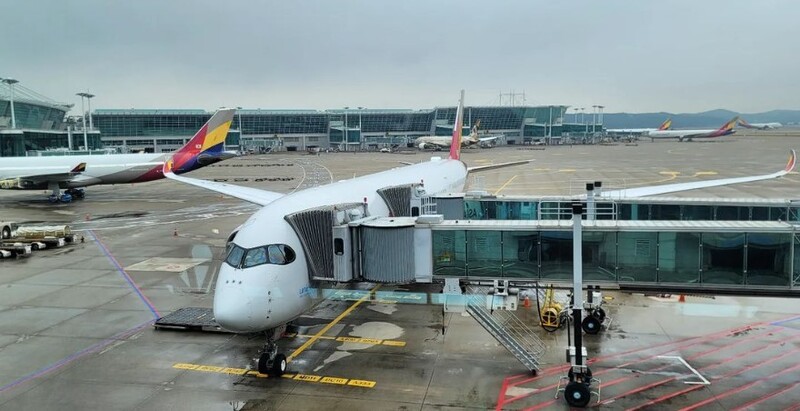
2021-10-14
When travel restrictions were lifted, did you take a trip? If so, where did you go and why? What are your memories of this trip? Were there any continuing COVID-19 restrictions in place?
Once the Pandemic restrictions were eased, not necessarily lifted, my family and I traveled to northern Arizona, southern Nevada, southern California, and Korea. During the Pandemic, life continued on as normal for me, not so much for my spouse. I was a social worker who continued to do home visits. My spouse was an elementary educator who was able to work from home. Life during the early-, and mid-stages of the Pandemic was busy, and it felt like we were going full-speed ahead - faster than before the Pandemic. Traveling has always been my family's go-to experience; however, the Pandemic halted travel as the areas we usually go to, road trips to California, or flying to Korea, were off-limits. Once restrictions were eased, we immediately traveled to those areas to get away. Restrictions were still present, mask mandates required us to wear masks in California, and Korea. One of the memorable moments was wearing a mask for a lift, a 14-hour flight, to Korea with a one-year-old who constantly wanted to pull the mask off. Lastly, the most memorable moment throughout the whole trip to California and then off to Korea was the feeling that we were always alone, during the day or night, everything felt like a ghost town.
-
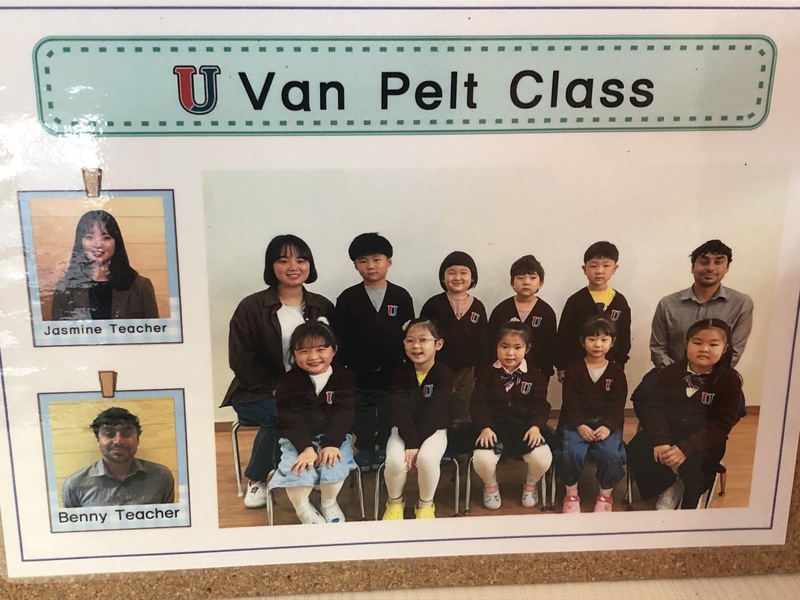
2022-03
During the height of the pandemic I began to think deeply about what i wanted to do if things ever got "Back to normal." I'd spent my entire life in San Jose California, and decided I wanted to get out and do something different. In early 2021 I went through the process of becoming certified to teach English abroad. I was eventually hired by an English academy in South Korea for a one year contract in the fall of 2021. I enjoyed it so much I ended up re-upping for another year. When I arrived I had to quarantine for one week, and my school director (essentially a principal) picked me up from my quarantine facility and brought me to my apartment, paid for by the school as part of my contract. It was an exciting adventure for me slowly adapting to a new culture and learning to navigate the country of South Korea. The attitude towards COVID was much more serious than in the U.S. The outdoor mask mandate was in force until Spring of 2022, and the indoor mandate was not lifted until January of 2023. Even coming from California, one of the U.S. states with stricter restrictions, it was an adjustment. It certainly wasn't a political issue here in South Korea. I can only speak very rudimentary Korean, but from what I could tell, nobody seemed to have a problem following government health advice. It was illuminating to see how different countries citizens can have radically different views to a crisis based on culture, beliefs, values and attitudes towards Science. Many people still choose to wear masks in public places now in the Summer of 2023. Given the tensions with the North, there is a heavy U.S. military presence in South Korea, which made it easier to connect with other English speakers and get a taste of home near the military bases. I even met my lovely partner here, a space force member stationed in the same city I teach and live in. Being shut in is what drove me to get out of my comfort zone and I'm truly glad for my experience over the past two years in Korea. I've met friends from different countries, experienced aspects of Korean culture that I love, and also have had my privilege checked by aspects of living in Korea that I'm not as fond of. I am excited to go back home this fall, but I hope to carry all I've learned about culture and life in Korea with me. In a strange way, I'm glad that at least the pandemic made me think about what I wanted to do and see once I had the freedom to explore, and I can't say enough how grateful I am for the travel I've been able to do.
-
2022-06-01
My family and I really like to travel, like a lot. We usually do a big vacation every year, and Covid-19 really threw a wrench in our annual plans (as it did to every single person alive). March of 2020, my family and I had traveled to Washington D.C. When we got back home to Utah, not even 24 hours later, Washington D.C. had shut down entirely. We felt lucky we got to go, but hopeful this shut down would only be two weeks. Fast forward two years, and we (again, like the rest of the world) were unable to go anywhere. My sister and I had gotten Covid-19 in November of 2020, and then the vaccines started to roll out. We had heard that if you were fully vaccinated, places were starting to slowly open for those individuals. We thought since we already had Covid-19, why not get vaccinated so we could travel? So, my mom, myself, and my sister all got vaccinated. Solely to travel. We are by no means 'anti-vaccination' people, actually quite the opposite. But we did have the normal hesitations of getting this vaccine just to such little prior research. Regardless, we got the vaccine. We started looking at places where we could go, from cruises to domestic travel to international. And then, the booster comes out. The rules are now that you have to have all three shots. And then, I get Covid-19 again in November of 2021, after having been fully vaccinated. Finally, we start to plan a Europe trip for the summer of 2022. Every plane, train, and automobile that would take us to and around Europe required a valid Covid-19 vaccination card. There were so many Covid-19 tests we had to take prior to departure from the US, then when we got to Europe, and then when we were getting ready to return home to the US. We had to fill out numerous forms verifying that we were not sick and had not been sick in the previous 14 days. While we were in Europe, the mask mandate had lifted for everywhere but Austria, but we didn't know that. We went to board an Austrian airlines flight without a mask, and we were then told we could not fly without a mask. We had to beg the flight attendant to give us one, as we didn't know (they were not nice about it). Keeping up with everyone's different rules and regulations and testing and forms definitely made our trip more difficult than it would be now.
-
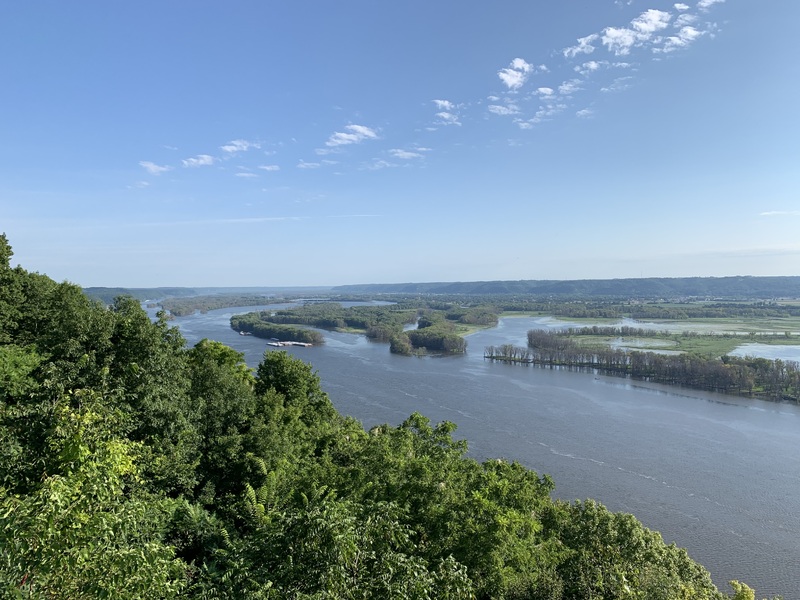
2020-08
This photo was taken along the Mississippi River in August 2020, shortly after stay-at-home orders were lifted in the Midwestern U.S. but still when other states (ex: New York) had tighter restrictions and 14-day quarantine policies upon arrival.
My family chose to take this drive because most attractions were outdoors. We traveled here because it was extremely easy to escape crowds and still provided excellent scenery -- and I always enjoy going to more remote areas for that reason. One thing I remember is not visiting any restaurants due to fear of contracting COVID; we ordered all of our dinners to go and had a picnic lunch every day.
Since this photo was taken, I have traveled to many other destinations, as I received my vaccines in early 2021, and felt more comfortable interacting with the public.
-
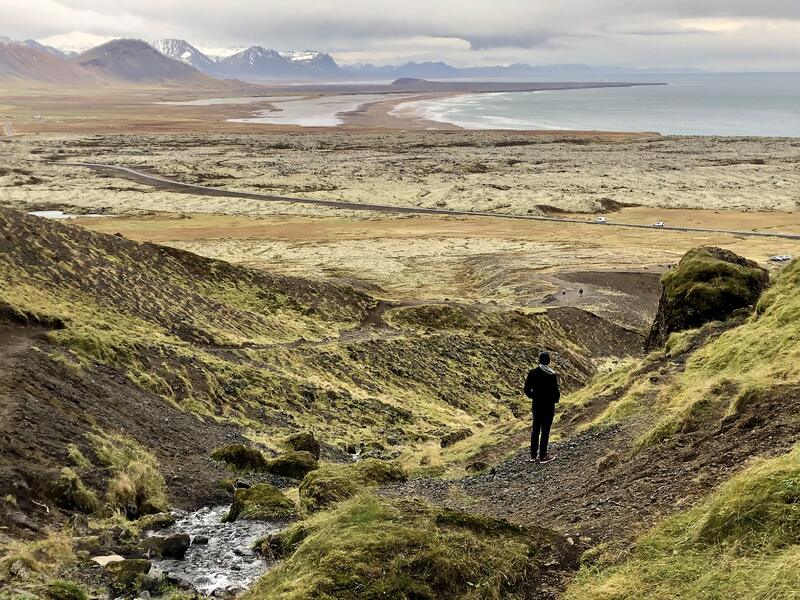
2021-10
First, let me say that I am not a big traveler. I was never bitten by the travel bug, and I had no strong desires to see the world. A bit controversial, but I remember feeling even just a few months of lockdown during the COVID-19 pandemic that I needed to get out. I needed to escape my house, not because being quarantined and working from home with my husband was problematic or bad as far as our being with one another 24/7, but I just felt very confined and small, almost suffocated. There’s a difference, I think between choosing not to travel or leave your house and not being able to leave your house because of guidelines and the risk of spread illness.
My husband and I had planned a trip to go to Iceland in September of 2019, but I just started a new job and couldn’t get time off that soon after starting, so we pushed it off to – as luck would have it – March 2020. In fact, it was planned for about a week or so after the entire world shut down and said “stay home.”
At that point, we were “refunded” our tickets and accommodations, and were in this place of not know when or if this trip would happen. By refunded, I mean that the airline gave us a credit for the amount needing to be spent within a year after this date. So we felt in a bit of a dilemma and unsure of what to do. The news of the pandemic and the guidelines were – understandably - constantly shifting, and we were looking at international travel, so we had to frequently check the U.S. travel restrictions as well as Iceland’s restrictions and compare. Even then, restrictions fluctuated, at some points saying travel was allowed on one end, at others, if you test positive you may have to stay there for your entire quarantine period in a designated space away from others, extending your stay for potentially a month. It was a force to even consider planning.
Finally, the stars aligned, and we were able to schedule our trip for October 2021, two years later that we had originally planned, but we were going and excited, if a bit nervous. I remember from the day we picked the flights looking up the travel restriction websites every day. I bookmarked the U.S. and Iceland’s sites to check to see if anything had changed in terms of guidelines or cancellations. We knew that we needed to schedule a covid test about 1 week prior to the flight and upload and bring proof of a negative result for the airline. We had been vaccinated, so we had to bring our cards for verification at customs. We also at that point, scheduled our return flight’s covid testing in Iceland to make sure that we had another negative result so we could come home. It was incredibly stressful trying to schedule all this, some sites were booked up, we had to take time off of work to get available appointments before going, all while reminding ourselves this is supposed to be a fun trip, a vacation in a country neither of us had visited before.
Luckily, everything by way of travel went well. At that point, being in such a crowded area, like an airport, felt strange and uncomfortable. Everyone wearing masks, but still getting closer to us that we were used to now. We had heard stories of how planes are breeding grounds for covid, the air was recycled, so if someone on the plane is a false negative, they’ll give it to everyone. But we landed 6 hours later, and were relieved to do so.
Despite not seeing a single puffin, our week in Iceland was absolutely fantastic; however, I can’t say that it wasn’t hindered a bit by covid and the transitioning public guidelines. After planning this trip for two years, we had read and marked up a number of travel guides that suggested areas to visits, restaurants to try, and trips to take while there. None of these books were equipped to prepare us for what vacation would look like post-pandemic. On one side, the sites and streets, even in the city of Reykjavik, were not nearly as crowded as we had read and expected it would be, which, for someone like me, who gets incredibly overwhelmed when around too many people, was perfect. We were able to visit museums, go on a virtual flyover of Iceland’s landscape, and see sights with no line or trouble. On the other hand, many store, restaurant, and attraction hours had changed or were complete shutdown, and were not updated on Google or on company sites. Occasionally we would finally reach a destination and find it was closed, but we understood that this was a small price to pay overall for a trip to Iceland so soon after things re-opened.
One restaurant we stopped at in a small town south of Reykjavik was completely empty, we were the only customers from when we walked in to when we left. We were able to talk to the owner, who was saying that this is what it has been like for them since the start of the pandemic and restrictions on travel, especially international travel and tourism. It was a family-owned restaurant, where the owner and his wife sold art and homemade Nordic pieces on one of the tables in the back. They relied on tourism and the income of international visitors, and they said that this was the hardest part of the pandemic for them, seeing Iceland, a huge tourist spot for years, now hit financially and, really their way of life, changing because of this long ban on travel.
For our trip across the country, fortunately, as it is, my husband and I are moderately outdoorsy people, so most of what we wanted to see or wanted to visit was outside and didn’t have the same restrictions that we found in town. We were able to spend a day at the Blue Lagoon, climbing a relatively recently active volcano, walk on the black sand beaches, and just drive around, climb out of the car and hike up a hill for the view.
Early on, we decided to abandon our strict itinerary and just think of what we might want to do the next day and plan from there. It was jarring for someone like me, who is almost too reliant on structure and order, but the flexibility worked better and developing that mindset of being adaptable in this post-pandemic time helped combat the frustration and panic we felt after realizing so much had changed from the typical and expected.
A stark difference we noticed while there was the general feeling towards covid-19 guidelines and vaccinations there compared to the U.S. at the time. Since the start of the pandemic, so many people were outspokenly skeptical and against the restrictions and guidelines in place and the vaccine, but we never really experienced any of that in Iceland. Rules and guidelines were quietly followed wherever we went, wearing a mask or maintaining distance, there was never a fight or resistance to this. We never saw or heard of any anti-vaccination groups or protests, as we had experienced both where we lived and on the news across America.
All in all, our trip coming out of the pandemic was great, if not a bit unexpected because of the guidelines and transition period that came from international travel post-covid.
-
2023-07-13
For myself and many others in China, people were faced with policies and travel restrictions that were put in place due to the Covid19 pandemic. These policies and restrictions included, but were not limited to: quarantines, frequent nucleic acid tests, scanning a code in order to enter all sorts of places, and working from home. These covid policies and travel restrictions were finally, and fully, lifted this past winter, in January of 2023.
This summer would be the first chance my family and I have to travel, and we will actually be starting our trip tomorrow, on July 13, 2023. As this is the first summer after covid policies were lifted, I’m expecting many places to be crowded. My wife has already done some research and has come across some videos on social media that shows some scenic spots that are crowded. As for the trip, we will be going on a road trip to Xinjiang, which is China's westernmost territory. We chose this place because we have never been there and have always wanted to visit. It is supposed to be one of the more beautiful places in China. While we will visit some urban locations, they will not be our primary focus as we are more interested in natural scenery. We’ll be starting out trip tomorrow, on July 13, 2023 and will be driving to areas in regions around Urumqi, Xinjiang. Among the places we will visit are Turpan, Sayram Lake, and Tekesi Bagua City. After that, we will drive back to Beijing, stopping at various places along the way and spend a few days in each place. Along the way, we plan to take many pictures and buy some souvenirs. My children might also have to write about the trip as well for an assignment for school.
-
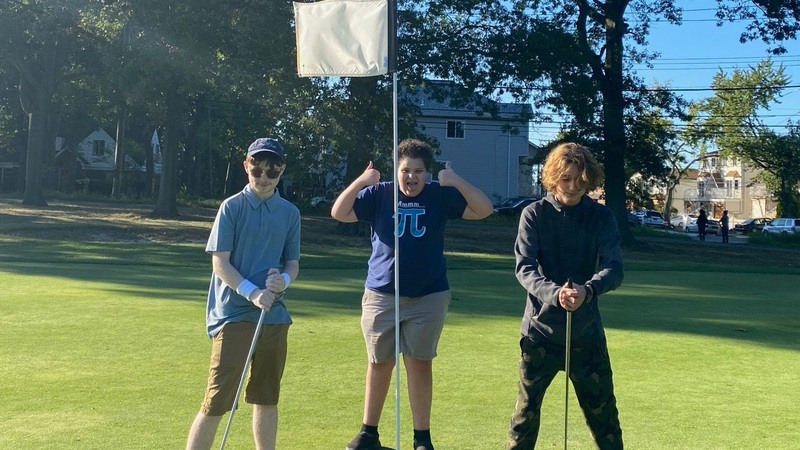
2020-09-20
It was a bright, sunny, and cheerful day in Staten Island, NY, as three boys embarked on a mission. Their goal was to create an amazing YouTube video that would uplift people's spirits during the peak of the COVID-19 pandemic. Frankie Cappello, Johnny Philp, and Christian Pineda, best friends for many years, shared the dream of becoming full-time content creators, entertaining millions worldwide.
In this particular video, the boys headed to La Tourette Golf Course to film a prank-filled adventure, intending to bring smiles to others' faces. The first prank was orchestrated by Frankie, who pretended to swing a golf club (which was actually a selfie stick) and hilariously failed, exclaiming as he claimed to have fallen on his behind, surprising nearby golfers.
For the second prank, Johnny and Christian approached a group of golfers, aiming for a "meaningful" conversation. Little did they know, the adult golfers decided to prank the boys by offering them a can of beer and jokingly asking if they were familiar with the popular song "WAP" by Cardi B and Megan Thee Stallion.
After successfully capturing these moments on film, Frankie's sister Ava took a snapshot that would later become the video's thumbnail and a cherished symbol of their friendship. Following a long night of editing by Johnny, the video was uploaded to YouTube the next day, forever preserving the memories and spreading joy among the boys and their supporters.
-
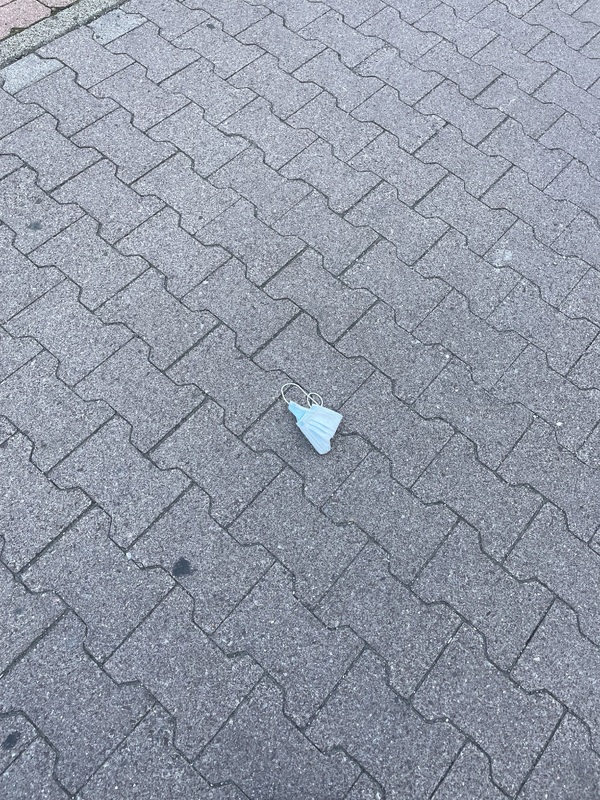
2022-06-20
I found this mask on the ground outside of a subway in Germany. At the time, masks were still mandatory on transportation, which was surprising since most of the world didn’t make masks mandatory. They even had someone walking around to either give people masks or to remind them of the mask mandate.
-
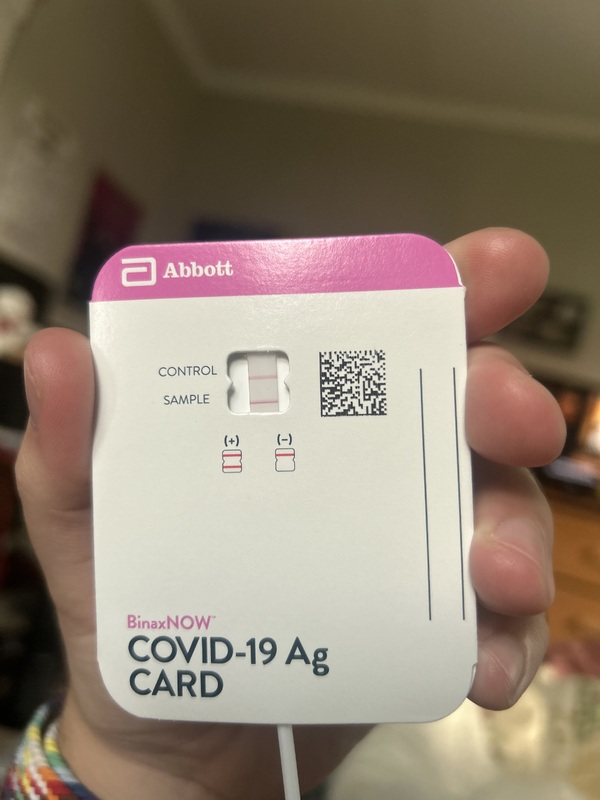
2023-06-20
I finally got sick with COVID after 3 years. I went on a cruise to celebrate my fiancé’s graduation and had to remove my mask when the heat was so bad in Mexico, Belize, and Honduras. I’m mostly worried about getting my fiancé sick who is disabled, but hopefully we don’t live together just yet. I’m currently being isolated in my parents house watching people stream on Twitch.TV and playing Animal Crossing. I had a fever of 101 yesterday, and hopefully am able to return to work on Friday which means I’ll be able to represent my work at Hampton Roads Pride on Saturday. Since it’s pride month, me getting COVID feels very homophobic
-
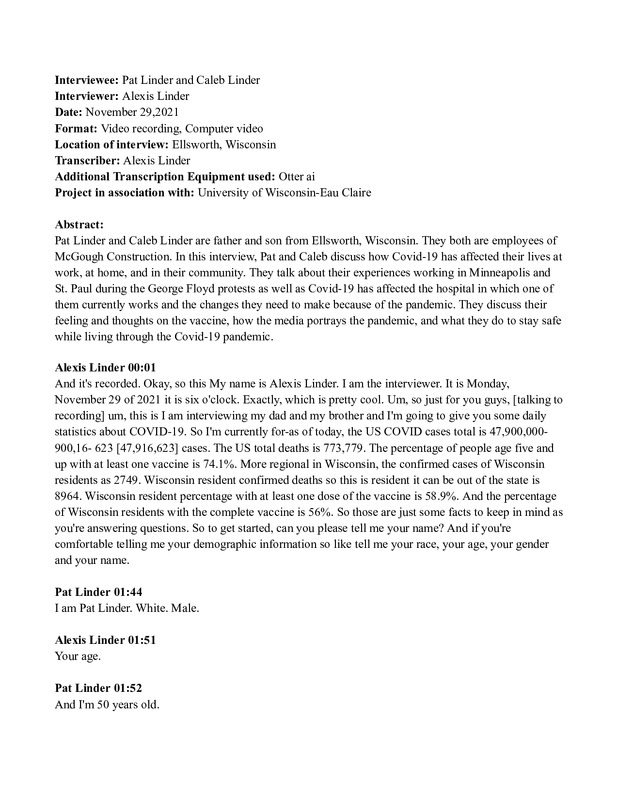
2021-11-29
Pat Linder and Caleb Linder are father and son from Ellsworth, Wisconsin. They both are employees of McGough Construction. In this interview, Pat and Caleb discuss how Covid-19 has affected their lives at work, at home, and in their community. They talk about their experiences working in Minneapolis and St. Paul during the George Floyd protests as well as Covid-19 has affected the hospital in which one of them currently works and the changes they need to make because of the pandemic. They discuss their feeling and thoughts on the vaccine, how the media portrays the pandemic, and what they do to stay safe while living through the Covid-19 pandemic.
-

2020-04-17
-
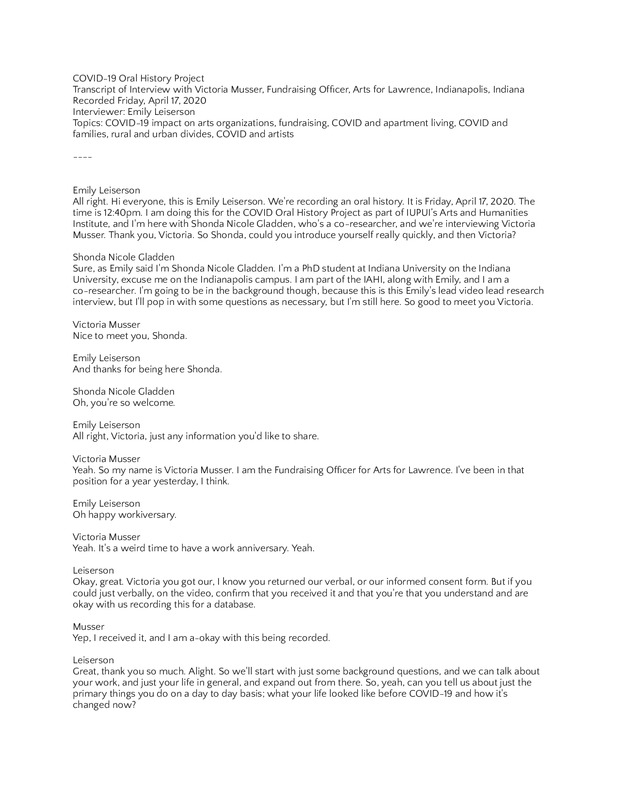
04/17/2020
-
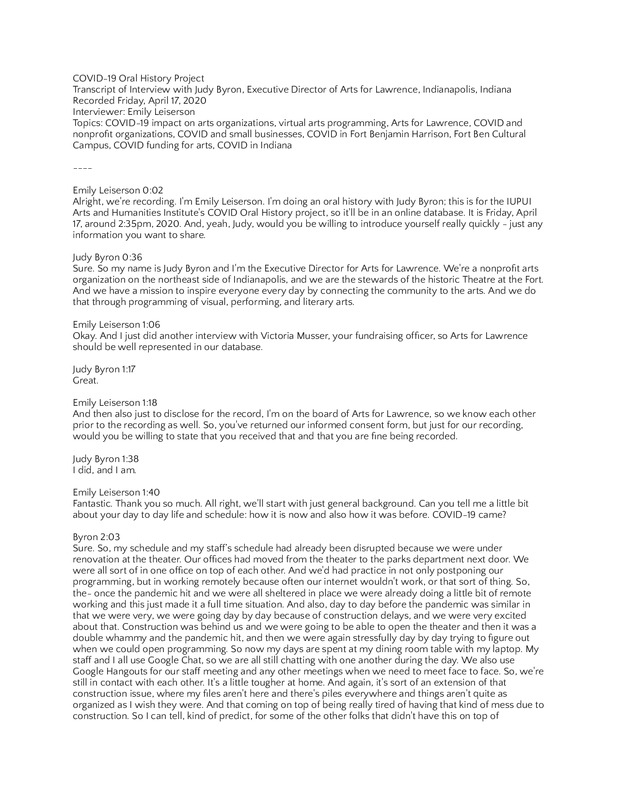
04/17/2020
-
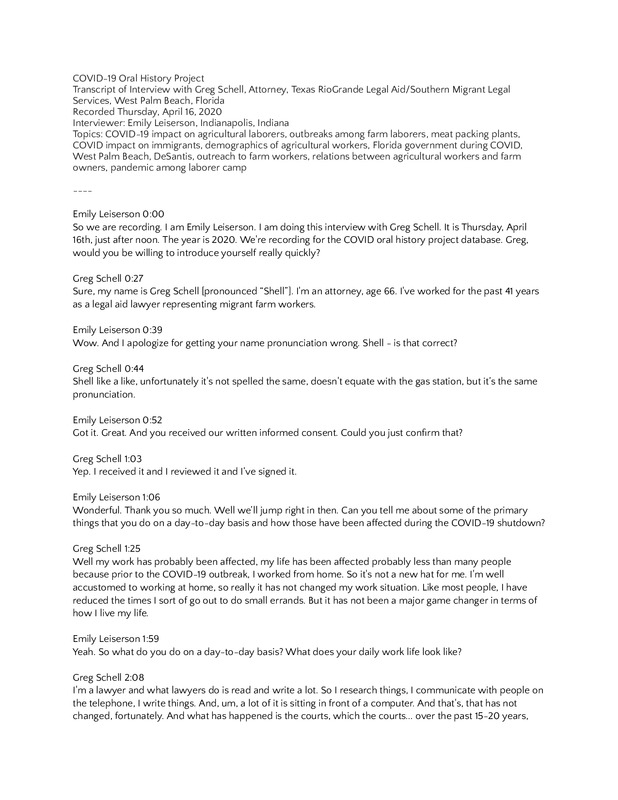
04/16/2020
-
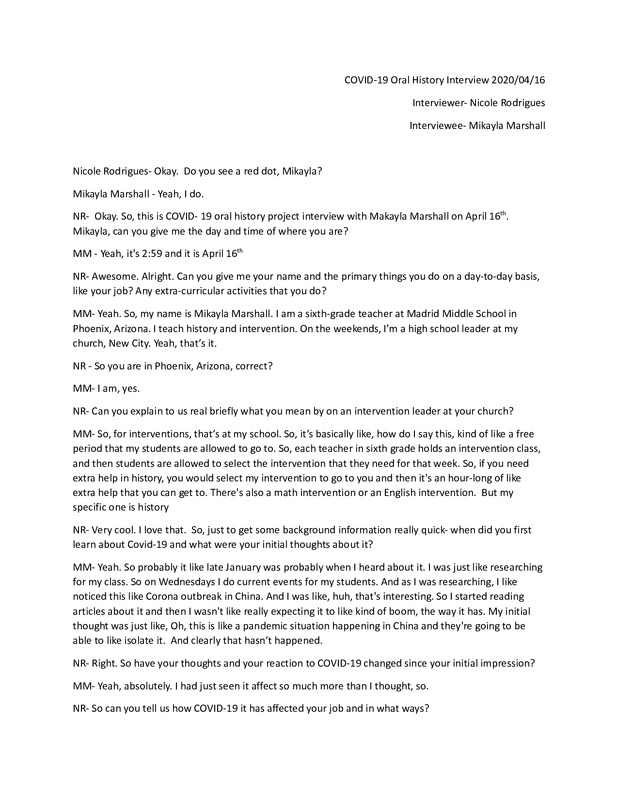
04/16/2020
-
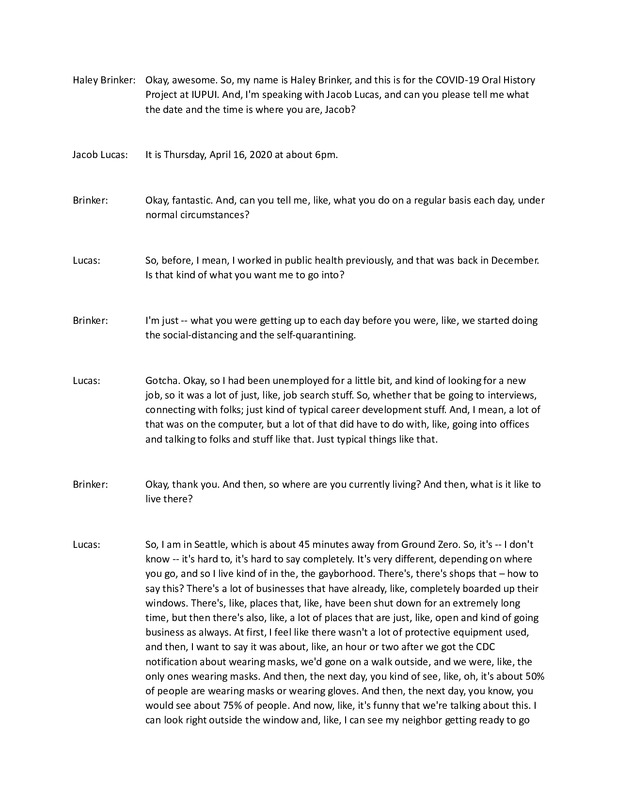
04/16/2020
-
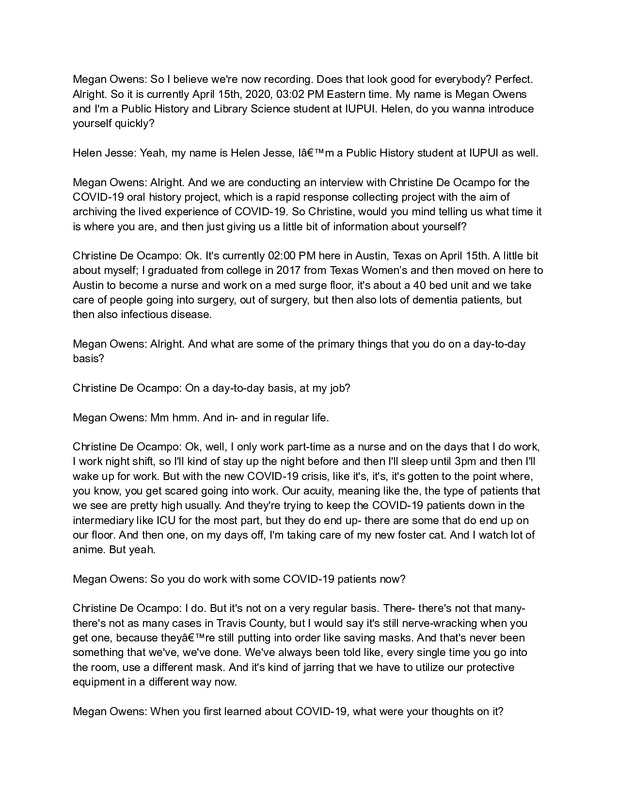
04/15/2020
-
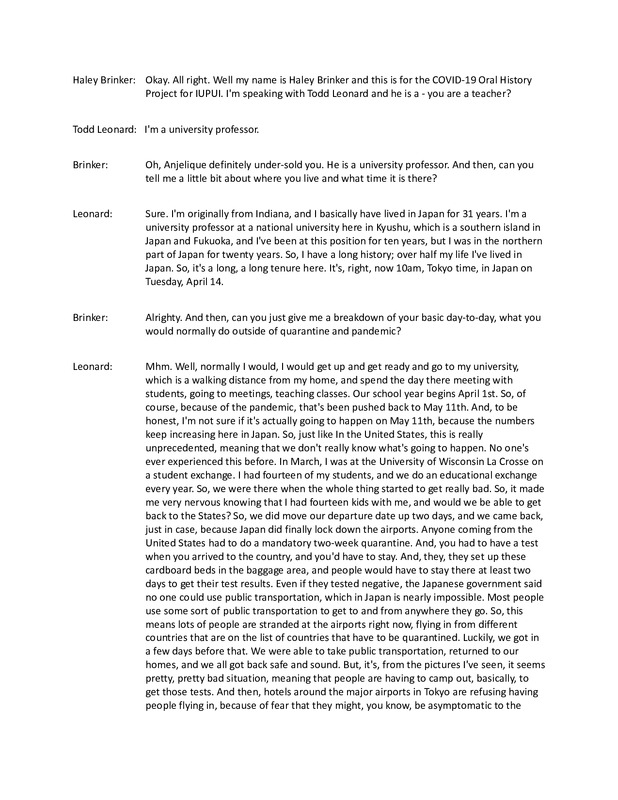
04/14/2020
-

04/11/2020
-
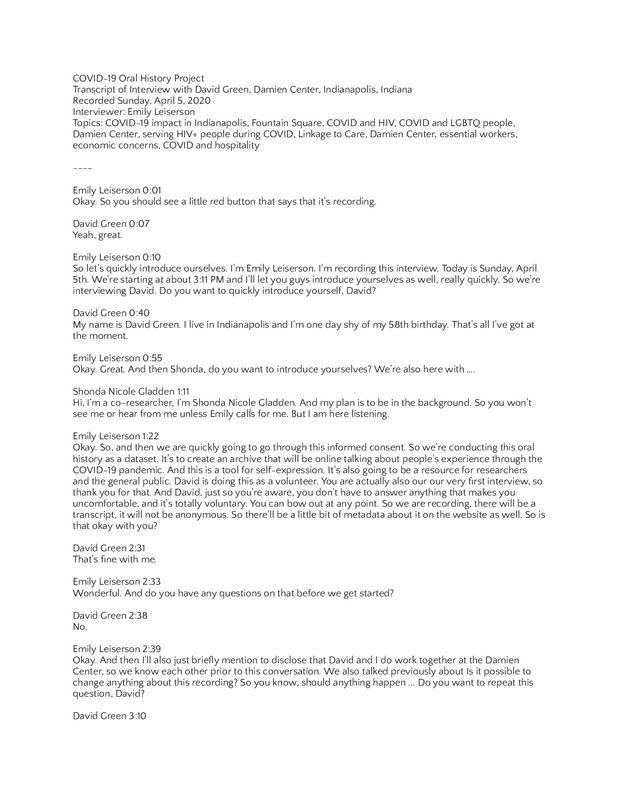
04/05/2020
-
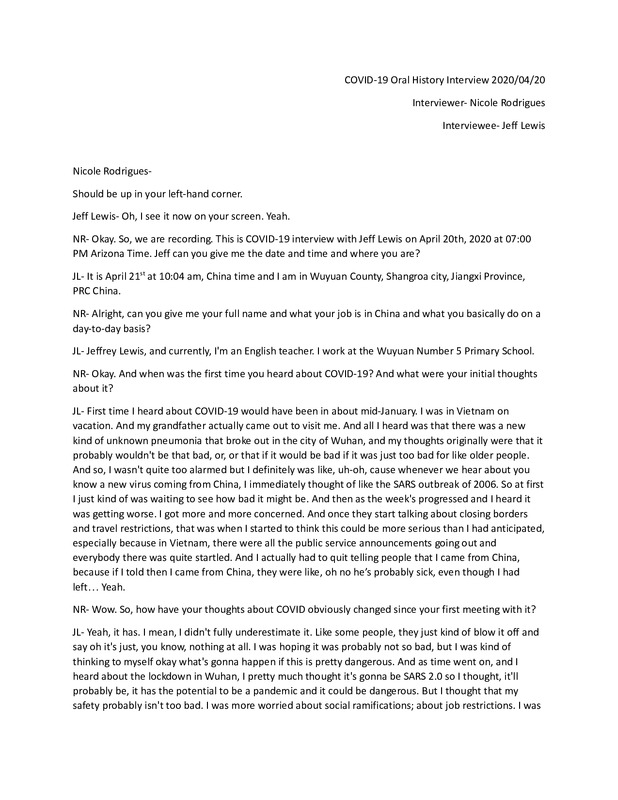
04/20/2020
-
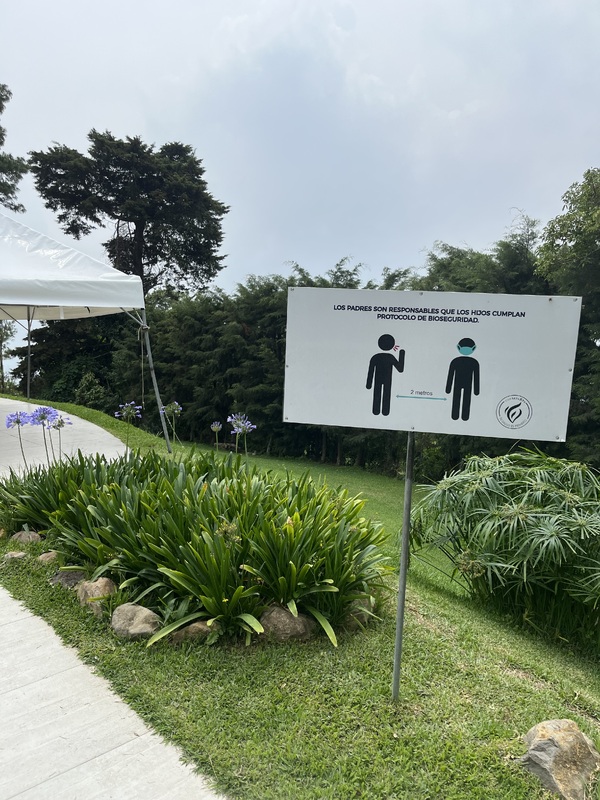
2023-04-29
I recently went on a trip with my dad to his home of El Salvador. I wasn’t too surprised that most COVID restrictions had been lifted three years later. I was more surprised that some people were still wearing masks. I leaned that people who work hospitality are still required (or strongly suggested) to still wear masks. There are hardly any remnants left from all the COVID mandates but I found these signs at one of the restaurants we went to reminding people to social distance. It’s interesting to see people now still wearing masks and sanitizing their hands in excess. I wonder if this is the “new norm” we were all talking about two years ago.
-
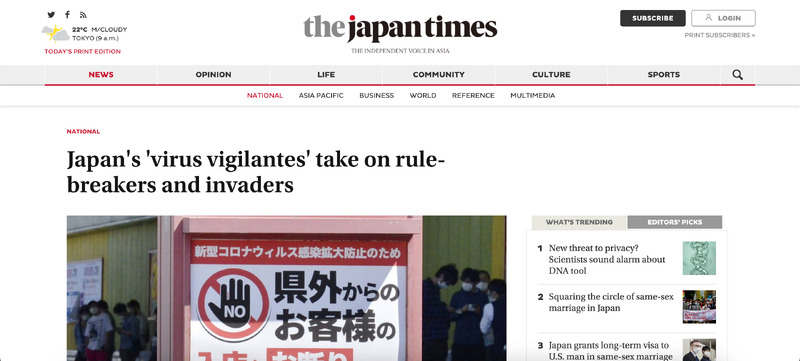
2023-05-16
It is about the excessive vigilantism that Japan experienced during the COVID-19 pandemic. Some people became the target of harsh criticism for failing to abide by governmental regulations, and I can remember that I felt a sense of experiencing the negative aspect of society seeing such harsh vigilantism against others. It is important to me because I can unconsciously become part of such vigilantism and should be aware of why I should not relentlessly accuse others of their actions.
-
2020-12-10
During pandemic, I was in the online English Bridge program of my university. The amount of assignments were a lot, and all I did during the pandemic was just waking up at 5am, eating break fast, going to class on zoom, eating lunch, doing assignments, eating dinner, and sleep. I could not even going grocery store to buy food or snacks because I could not finish assignments unless I just kept studying. Thus, in my room, I was alone and studying without any joy. My family supported me a lot for my study but I felt that only I was doing what I wanted (study), whereas my family was just working and doing domestic affairs. I was so depressed because if I was not existed, I did not let my family work so hard. I wanted to disappear at the time.
-
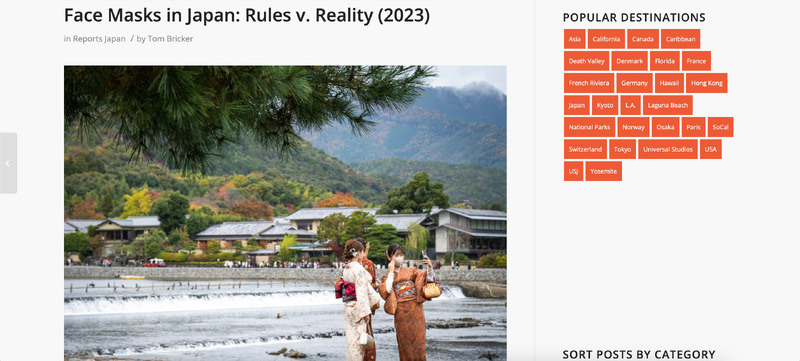
2023-05-15
Although the world is approaching the post-pandemic, many people are still wearing masks in Japan. It can be attributed to unique conformity to others who still wear a mask and the establishment of masking as a habit after 3 years of masking.
-

2023-05-16
I will analyze this article focusing on the devastating impacts of the Covid-19 pandemic, including exploitation of marginalized groups like migrant workers, oxygen and other medical resource shortages, and the overall structural consequences of poor governance and health infrastructures in India. Not only does the writer Krishnan cater to the failures of the current Indian federal government during the pandemic, but he aims to point out the great moral failure of our whole generation, which has exposed the long-existing structural issues in providing for public healthcare and social security of Indian citizens.
-
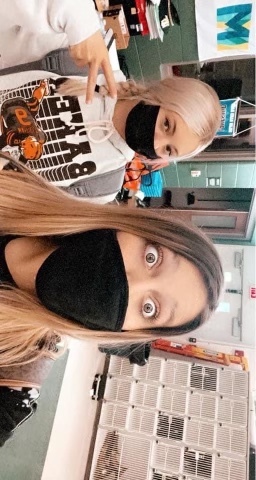
2021-09-30
I have submitted this picture to show what it was like just to be at school during the pandemic. This is a picture of my friend and I in band class. We had to wear masks, and even had special musician masks we had to wear while playing our instruments. This was a very hard time, especially with it being my senior year of high school. I just wanted things to be normal again.
-
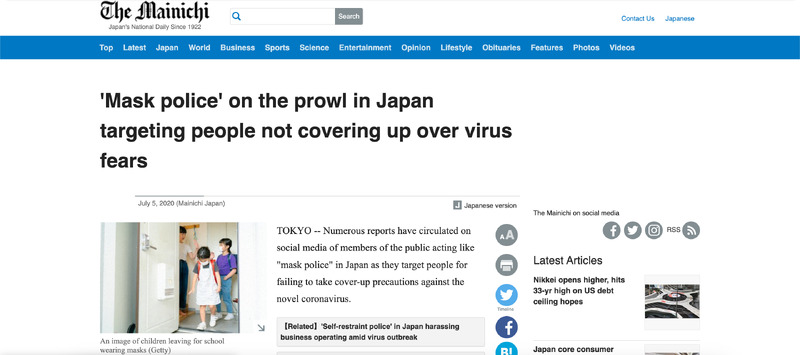
2023-05-15
Human beings have experienced pandemic throughout the history. However, the there are always conflicts, violence, and division occur. In order not to repeat the history, it is important to learn from the past and apply to our everyday lives.
-
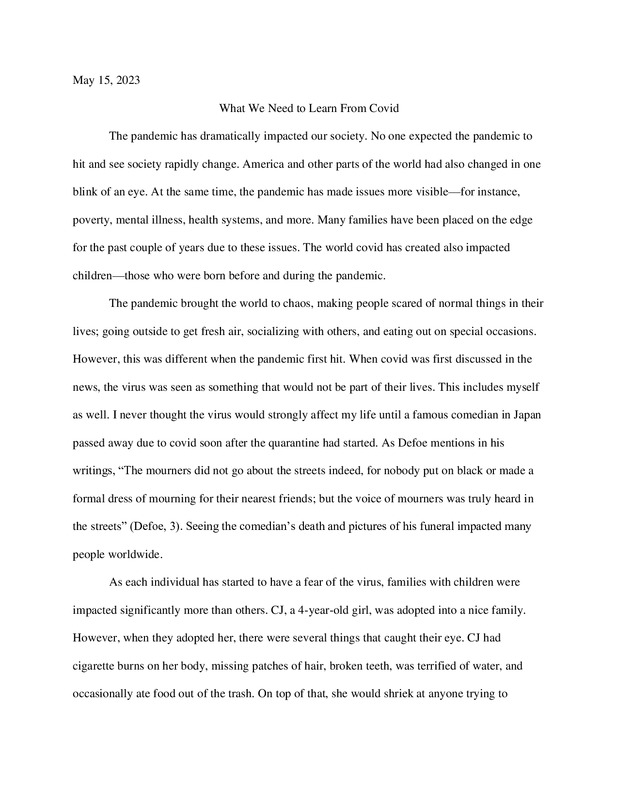
2023-05-15
This is based off of what I have seen and heard throughout the pandemic. I have decided to post this because we need more awareness of the issues in education.
-
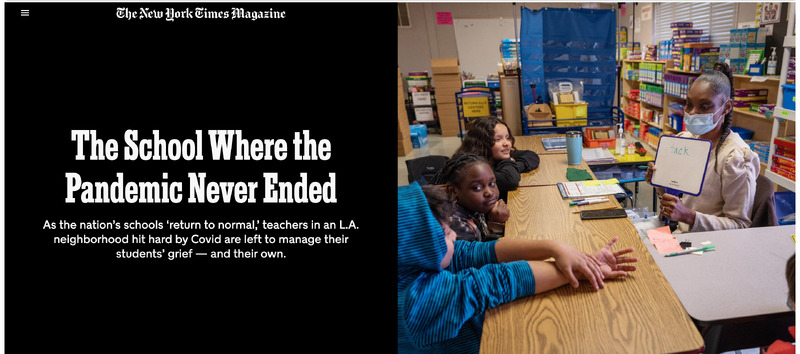
2023-05-15
Analyzing a New York Times article entitled, "The School Where the Pandemic Never Ended" through the lens of Daniel Defoe and Thomas Paine
-
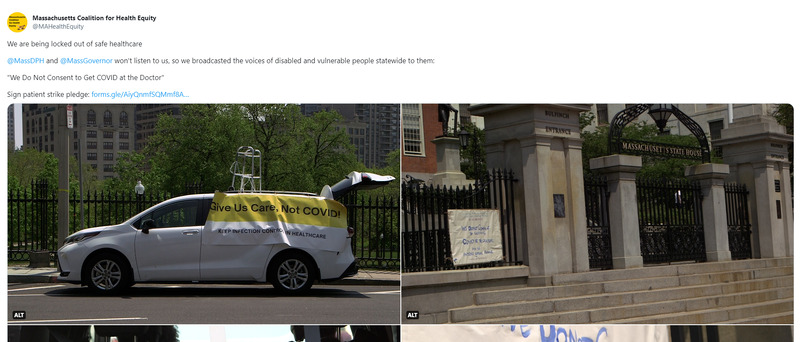
2023-05-14
With the designation of COVID-19 as a "public health emergency" by the Centers for Disease Control and Prevention (CDC) ending as of May 11, 2023, public healthcare facilities throughout the US are rolling back protections they once employed to try to keep people safer during this ongoing pandemic. So, as this unit asks of us students, are pandemics the “great equalizers” in terms of social inequalities, and is there more equality now that the "emergency" has been deemed to be over? I argue that this is not the case, as immune compromised and disabled people have been more or less left for dead. A huge swath of healthcare facilities have removed mask mandates for care providers and hospital visitors, which leaves vulnerable and immune compromised people at a much higher risk of getting COVID-19 while receiving the medical care that is necessary for them to manage their conditions. In response, people and organizations, such as the Massachusetts Coalition for Health Equity in the tweet above, have begun to mobilize in favor of maintaining COVID-19 protections in healthcare settings by organizing strikes, protests, petitions, and phone banks to public officials.
The reasons for maintaining COVID precuations such as mask mandates, access to COVID tests, and enhanced filtration in healthcare settings are clear. As the Massachusetts Coalition for Health Equity describes in their petition titled "Patient Strike Authorization Vote," the CDC "advises immunocompromised people to avoid crowded indoor settings, which now includes all healthcare institutions without universal masking," essentially maintaining that COVID is dangerous to immune compromised people while giving them no option but to risk exposure if they want to receive their necessary healthcare (Patient Strike Authorization Vote). The petition text explains that "[n]ational leaders in hospital epidemiology argue that universal masking should become the new standard of care, as gloves became with HIV" in order to keep people with compromised immune systems such as young children and elders safe (Patient Strike Authorization Vote). Currently, disabled and immune compromised people "are being locked out of safe healthcare" and are facing discrimination that makes them unwelcome and unsafe in healthcare settings (Massachusetts Coalition for Health Equity).
In order to relate this modern COVID-19 pandemic to our course materials and demonstrate that discriminatory treatment during times of disease is not new, I will compare the above post to points from the text "The Chinese as Medical Scapegoats In San Francisco, 1870-1905" by Joan B. Trauner. This text discusses the discrimination against Chinese and other East Asian people living in San Francisco's Chinatown during a bubonic plague outbreak in the late nineteenth century. Sinophobic and anti-Asian sentiments, similar to those that arose during the epidemic Trauner details, have also been evident throughout the COVID-19 pandemic, so much so that even US President Donald Trump referred to COVID-19 as the "China virus." Ableism has also been prevalent throughout the COVID pandemic, as many people no longer care about the effects of the virus, because it harms disabled and immune compromised people most, especially people who also face racial discrimination in healthcare.
Trauner explains that, because white people in the US believed the plague primarily affected Chinese and other Asian people, and because plagues were bad for business,"[t]he governor of California, Henry T. Gage, and executives of big business and of the large railroads, in conjunction with the San Francisco Board of Trade, the San Francisco Chamber of Commerce, and the Merchants Association, were all determined to prove that the plague did not exist in San Francisco" (78). The author of the Patient Strike Authorization Vote argues that today, we see a similar pro-business sentiment that comes at the expense of immune compromised people who are more likely to get sick with and die from COVID-19, writing: "Hospitals that remove masks and surveillance testing are making a value judgement about our lives, because they want to preserve their profit margins" (Patient Strike Authorization Vote). The CDC's ending of the COVID-19 public health emergency designation and the resulting halt of COVID mitigation procedures indicate that people are ignoring the needs of immune compromised people so that everyone can feel more comfortable going "back to normal" and maintaining consumption habits that are desired by businesses.
Additionally, in both the past plague outbreak and the current pandemic, public health officials have shown hesitancy to give people vital information, which has led to harm. As Trauner explains, during the bubonic plague epidemic, "San Francisco Mayor Eugene Schmitz refused to approve the printing of health reports and vital statistics and even attempted to remove from office four members of the Board of Health who persisted in stating that plague existed in San Francisco" (79). Today, because the public health emergency designation ended on May 11th, 2023, the CDC is "no longer reporting aggregate cases and deaths, COVID-19 Community Levels, COVID-19 Community Transmission Levels, or COVID-19 Electronic Laboratory Reporting (CELR) data," all of which have been used to determine the severity of the situation throughout the pandemic (COVID Data Tracker). Meanwhile, over one thousand people are dying of COVID every single week, but COVID transmission levels are not being tracked, so people cannot know how many COVID positive cases there are in their county and how likely they are to contract the virus by going out in public (COVID Data Tracker).
Another similarity between the COVID-19 pandemic and the bubonic plague outbreak of the late nineteenth century lies in the responses of the people facing discriminatory treatment in public health settings during these respective disease outbreaks. Trauner writes that before, during, and after the bubonic plague outbreak, Chinese businesses and health practitioners constructed and operated their own hospitals that would treat the people of Chinatown, because they were not welcome at other hospitals due to racial discrimination (81). Trauner explains that "[e]arly Chinese immigrants realized the necessity of banding together and providing for their own health care needs," in light of the government abandoning their health needs (81). Activists and organizations like the Massachusetts Coalition for Health Equity are currently banding together and fighting to get better and safer care for immune compromised people during the COVID-19 outbreak, as they are also facing discrimination at hospitals rolling back COVID precautions, because these spaces are not safe for them. The organizing they are doing to try to make healthcare settings safer for immune compromised people looks different, as no one is proposing the creation of immunocompromised-specific hospitals. They are fighting for better treatment, still, using slogans like "We Do Not Consent to Get COVID at the Doctor," and urging people that "[w]e must take collective action to prevent this mass violation of our human rights and federal rights to safe care," as stipulated under the Americans with Disabilities Act (Massachusetts Coalition for Health Equity). In both disease outbreaks, it has been the duty of those being discriminated against to take care of and advocate for themselves.
So, in fact, pandemics are not "great equalizers"; in reality, they not only make pre-existing inequities even more visible, but exacerbate them even further. As Trauner argues, "Health policy [...] manifests not only the state of the medical sciences, but the expectations and the value system of society-at-large," and as such, if society-at-large is racist and ableist, then the health policies put into place will reflect these discriminatory values (70). These governmental measures come at a cost to everyone, and especially those facing racist and ableist discrimination. Had the nineteenth-century bubonic plague outbreak been determined an emergency and treated as a serious threat in spite of sinophobic and anti-Asian sentiments, perhaps more research could have been carried out sooner, and more lives could have been saved. If people in the US continue to take the COVID-19 pandemic seriously and not dismiss the pleas of immune compromised and disabled people to continue precautions, perhaps loss of life and further disablement from COVID infection can be mitigated.
-
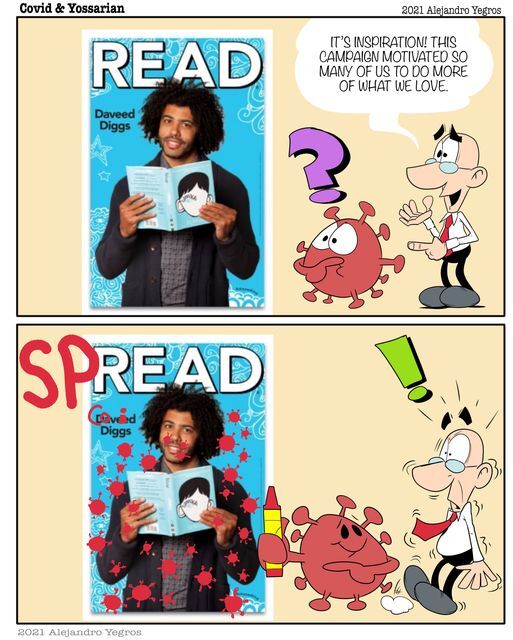
2021-12-23
A comic strip about Covid-19
-
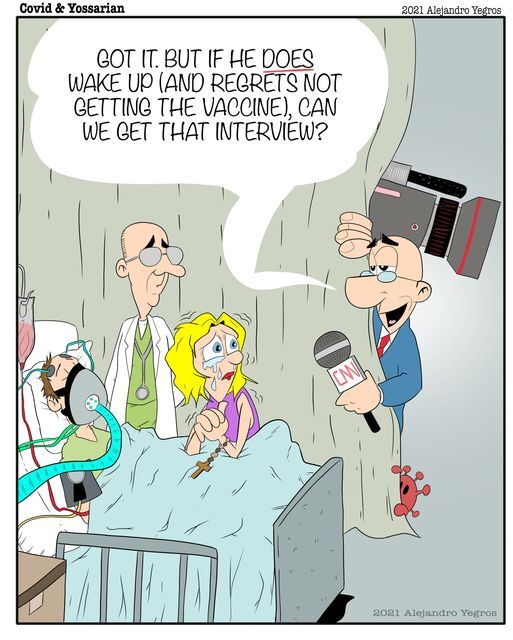
2021-08-20
A comic strip about Covid-19
-
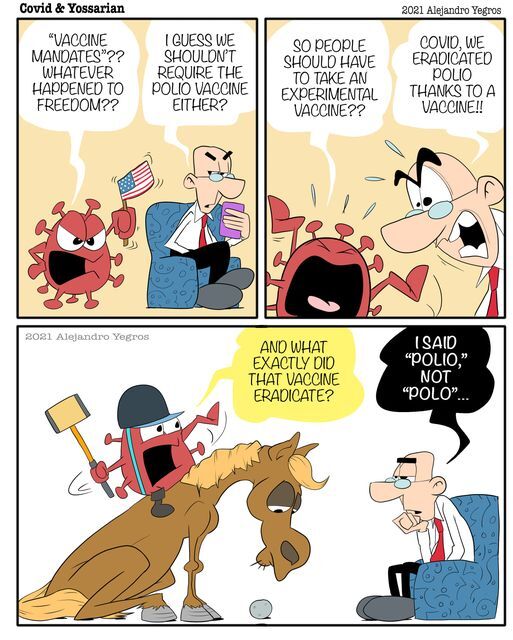
2021-08-09
A comic strip about Covid-19
-
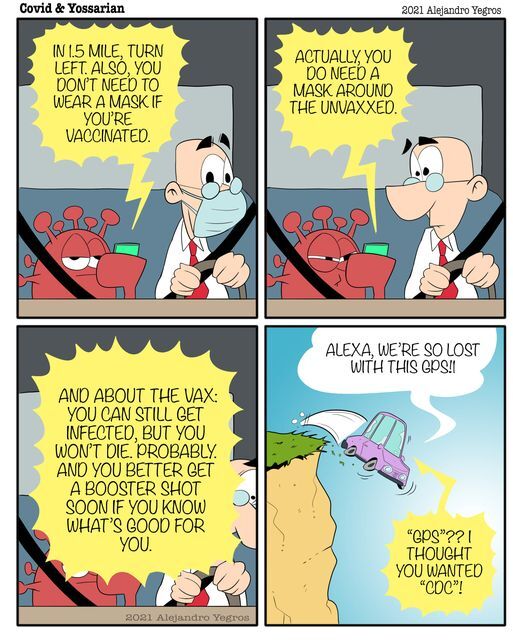
2021-08-06
A comic strip about Covid-19
 2020-07-14
2020-07-14 2022-03
2022-03 2021-06-16
2021-06-16 2022-06-12
2022-06-12 2021-07
2021-07 2021-05-05
2021-05-05 2020-10-10
2020-10-10 2021-12-25
2021-12-25 2021-08-15
2021-08-15 2022-06-03
2022-06-03 2021-03-06
2021-03-06 2022-06-12
2022-06-12 2021-10-14
2021-10-14 2022-03
2022-03 2020-08
2020-08 2021-10
2021-10 2020-09-20
2020-09-20 2022-06-20
2022-06-20 2023-06-20
2023-06-20 2021-11-29
2021-11-29 2020-04-17
2020-04-17 04/17/2020
04/17/2020 04/17/2020
04/17/2020 04/16/2020
04/16/2020 04/16/2020
04/16/2020 04/16/2020
04/16/2020 04/15/2020
04/15/2020 04/14/2020
04/14/2020 04/11/2020
04/11/2020 04/05/2020
04/05/2020 04/20/2020
04/20/2020 2023-04-29
2023-04-29 2023-05-16
2023-05-16 2023-05-15
2023-05-15 2023-05-16
2023-05-16 2021-09-30
2021-09-30 2023-05-15
2023-05-15 2023-05-15
2023-05-15 2023-05-15
2023-05-15 2023-05-14
2023-05-14 2021-12-23
2021-12-23 2021-08-20
2021-08-20 2021-08-09
2021-08-09 2021-08-06
2021-08-06